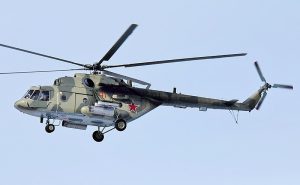More than eight months ago, as the Western-backed Afghan government of Ashraf Ghani crumbled, a portion of the Afghan Air Force flew out of the country and landed in Uzbekistan and Tajikistan. The Afghans eventually made their way to processing centers in countries like the United Arab Emirates and then on to the United States. Their planes remained in Central Asia, and for now that seems to be where they’ll stay.
In January 2022, Taliban Defense Minister Mohammad Yaqoob warned Uzbekistan and Tajikistan “not to test our patience and not to force us to take all possible retaliatory steps” to regain possession of the aircraft. The Taliban government had previously issued calls for members of the Afghan Air Force, who fled or were in hiding, to return to their jobs — just for new bosses.
In a recent interview with Voice of America’s Navbahor Imamova, Ismatulla Irgashev, a senior adviser to Uzbek President Shavkat Mirziyoyev, explained that Tashkent would not be returning the planes to Afghanistan.
“The U.S. government paid for them,” Irgashev explained. “It funded the previous Afghan government. So, we believe it is totally up to Washington how to deal with them.
“We’ve kept this military equipment in agreement with the U.S. and have told the Taliban so.”
At least 46 Afghan aircraft landed in Uzbekistan in mid-August after a mad dash across the border as Kabul fell. An additional 18 landed in Tajikistan. Of those that landed in Uzbekistan, 22 were small fixed-wing aircraft, like A-29s, and 24 were helicopters, mostly Mi-17s.
According to the January 2022 quarterly report from the U.S. Special Inspector General for Afghanistan Reconstruction, as of August 15, 2021, the Afghan Air Force had “131 available, usable aircraft among the 162 aircraft in its total inventory.” The Special Mission Wing “had 39 aircraft of unknown status available (helicopters included 18 Mi-17s and five UH-60s; airplanes included 16 PC-12 single-engine passenger and light-cargo aircraft).”
A number of Afghan aircraft were outside of Afghanistan for repairs when the government fell, including five Russian-made Mi-17s, which were in Ukraine at the time.
In the 2010s, the United States purchased a fleet of Mi-17 helicopters for the Afghan Air Force. The Mi-17 is a Soviet design still produced by a state-owned arms manufacturer in Russia. The aircraft, relatively cheap, was familiar to Afghan pilots given the decade-long Soviet invasion of Afghanistan in the 1980s.
In late January, as the Biden administration aired increasingly urgent warnings of an imminent invasion of Ukraine by Russia, it also sent a notification to Congress regarding the transfer of the five helicopters to Ukraine’s military. They helicopters were labeled “excess defense articles” under the Arms Export Control Act and have been handed over to Ukrainian forces.
Eleven other Mi-17s, in storage at Davis-Monthan Air Force Base in Arizona, are now destined for Ukraine, too, under increased U.S. transfers of weapons and aid to the country.
What happens to the Afghan planes in Central Asia remains an open question. Irgashev clearly stated the planes were U.S. property, so ultimately it is up Washington what happens to them. Imamova’s report quoted U.S. defense official as stating that “[the Department of Defense] is still determining final disposition options,” noting interest from U.S. government agencies and foreign governments.
One option is transferring them to local air forces: Uzbekistan, for example, flies Soviet-era Mi-8 and Mi-17s. That may not be an ideal option, however, given Uzbekistan’s efforts to engage with the Taliban diplomatically. Ukraine, already a destination for 16 Mi-17s originally intended for the Afghan Air Force, is another potential option.

































